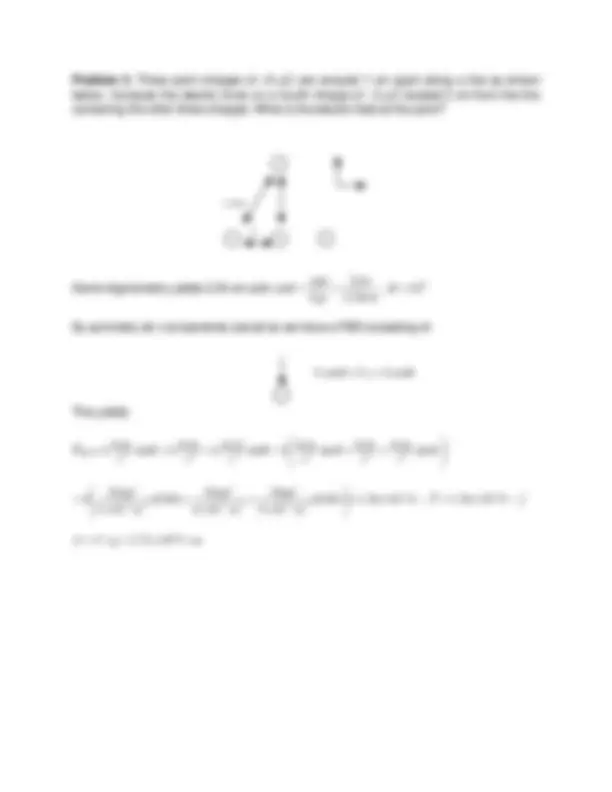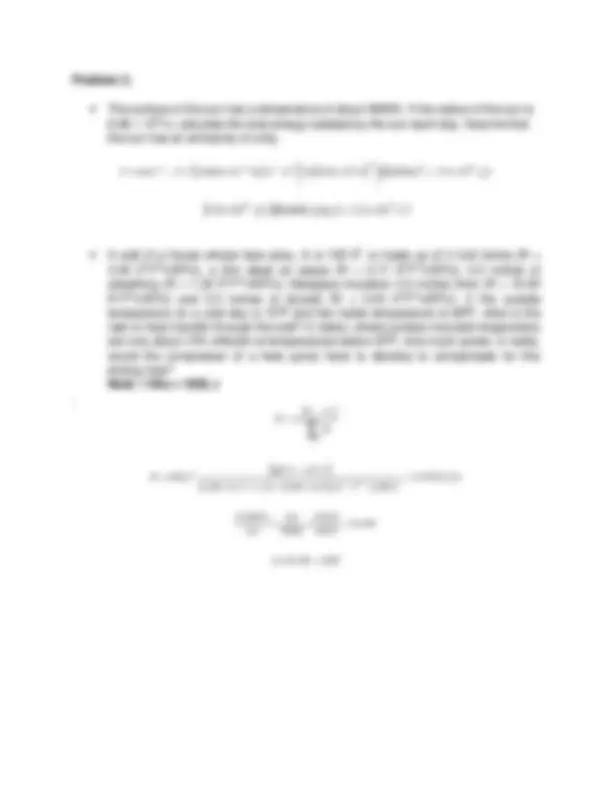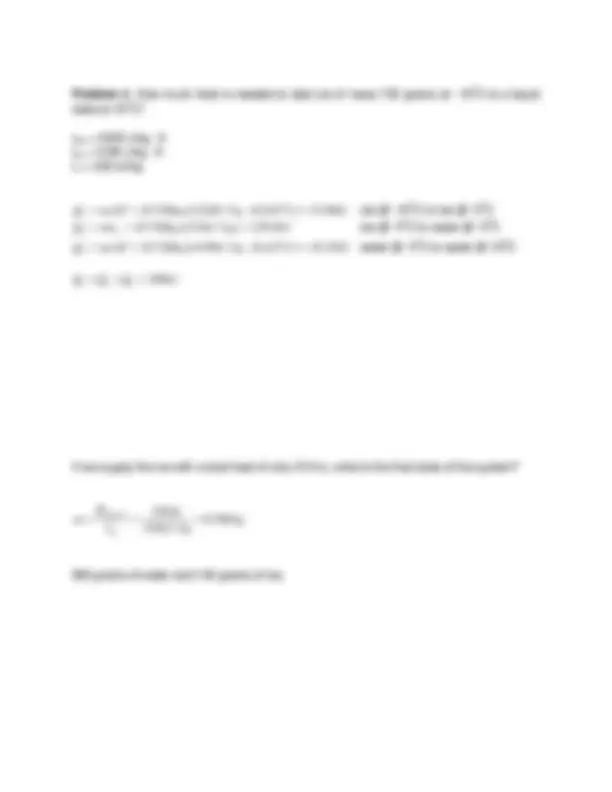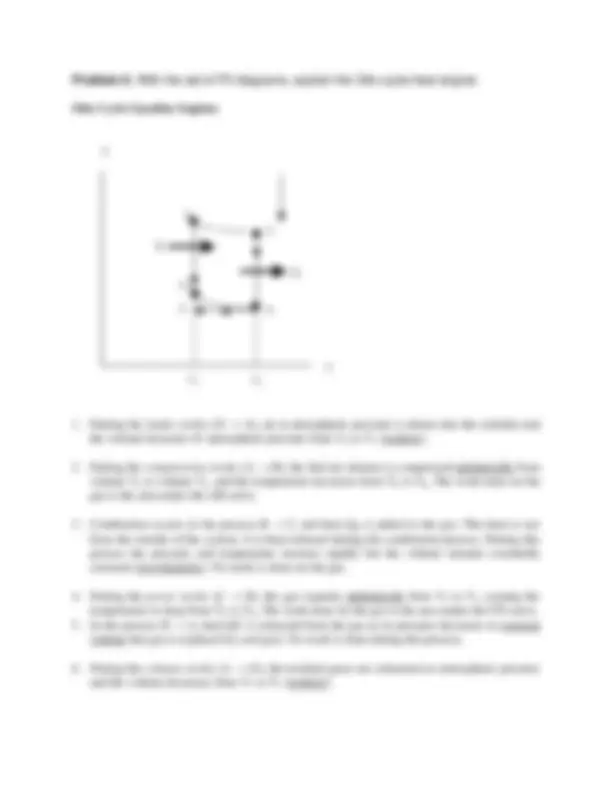






Study with the several resources on Docsity

Earn points by helping other students or get them with a premium plan


Prepare for your exams
Study with the several resources on Docsity

Earn points to download
Earn points by helping other students or get them with a premium plan
Community
Ask the community for help and clear up your study doubts
Discover the best universities in your country according to Docsity users
Free resources
Download our free guides on studying techniques, anxiety management strategies, and thesis advice from Docsity tutors
The solutions to problem 1 to problem 6 from examination 1 of phys 212. The problems cover various topics in thermodynamics and electricity, including heat transfer, specific heat, emissivity, electric force, and the otto cycle. Students are advised to use basic physical principles and show all their work to receive full credit.
Typology: Exams
1 / 8

This page cannot be seen from the preview
Don't miss anything!





Name (print): _____________________________
Signature _____________________________
Problem 1 __________________
Problem 2 __________________
Problem 3 __________________
Problem 4 __________________
Problem 5 __________________
Problem 6 __________________
Total __________________
Directions: This exam contains six problems worth 20 points each for a possible 120/ points. Your solutions should be written as neatly as possible and arranged in a logical manner. Credit will be awarded on the basis of thought, compactness, and neatness of the written solution. Remember to use basic physical principles in solving the problems. Show all of your work. I will not award full points for a problem with a solution that I am unable to decipher even if the answer is correct.
An equation sheet has been provided. CRC handbooks are allowed. Calculator rule is in effect. Good Luck!
Problem 1. A copper slug having a mass of 75 grams is heated to a temperature of 312^0 C. The slug is dropped into a beaker containing 220 grams of water. The initial temperature of the water and beaker is 12^0 C. What is the final equilibrium temperature of the system? (Hint: heat capacity C, is not the same as specific heat which is heat capacity per unit mass)
Note: Cbeaker = 45 cal/K (heat capacity) , cwater = 1.00 cal/g ⋅⋅ K, ccopper = 0.0923 cal/g ⋅⋅ K
− m (^) Cu cCu ∆ T = mwcw ∆ T + Cbea ker∆ T
Cu Cu bea w w
Cu Cu bea i w w i f (^) m c C m c
m c T C T mc T T
ker
ker
cal g K g cal K cal g K g
cal g K g C cal K C cal g K g C T (^) f ⋅ + + ⋅
cal C
cal T (^) f 0 200
Problem 3.
P AeT P ( W m K ) ( m ) ( )( K ) 4 26 J s 4 8 2 4 8 2
= σ ∴ = × −^ ⋅ ^ π ×
∑
i
Ri
T T H A^21
( )
BTU hr ft F hBTU
H ft F F 315
100 68 15 2 0
W BTU
J s
hr hr
BTU
1055 3600
1 1
315 × × =
. 9 × 92. 3 W = 83 W
Problem 4. How much heat is needed to take ice of mass 720 grams at –10^0 C to a liquid state at 15^0 C?
cice = 2220 J/kg ⋅ K cw = 4190 J/kg ⋅ K Lf = 333 kJ/kg
Q 1 (^) = mc ∆ T =( 0. 720 kg )( 2220 J / kg ⋅ K )( 100 C )= 15. 98 kJ ice @ -10^0 C to ice @ 0^0 C Q (^) 2 = mLf =( 0. 720 kg )( 333 kJ / kg )= 239. 8 kJ ice @ 0^0 C to water @ 0^0 C Q (^) 3 = mc ∆ T =( 0. 720 kg )( 4190 J / kg ⋅ K )( 150 C )= 45. 25 kJ water @ 0^0 C to water @ 15^0 C
Q 1 (^) + Q 2 + Q 3 = 300 kJ
If we supply the ice with a total heat of only 210 kJ, what is the final state of the system?
kg kJ kg
kJ L
m f
leftover
580 grams of water and 140 grams of ice.
( )^2
3
( )
∫
a
a
x
2 2 2 3
Problem 6. With the aid of PV diagrams, explain the Otto cycle heat engine.
Otto Cycle Gasoline Engines
Qh
Qc